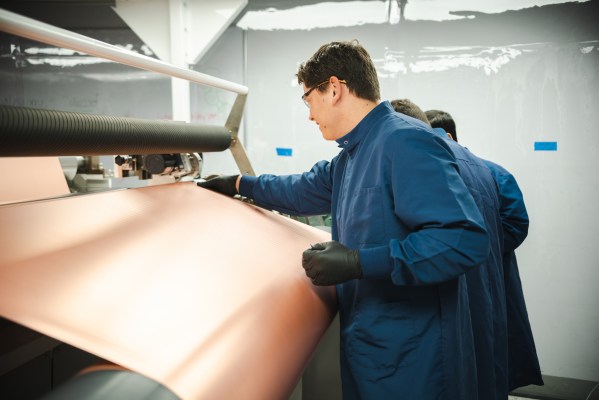
Battery materials and recycling startup Redwood Materials has secured a conditional determination for a $2 billion bank loan from the Division of Power as aspect of the Biden Administration’s bid to establish up a supply chain for EVs in the United States.
The conditional motivation from DOE’s personal loan method office environment, which was introduced Thursday, is portion of the State-of-the-art Know-how Car Manufacturing Financial loan Method. The milestone-centered funding will be offered to Redwood in tranches to aid its growth and the enlargement of its headquarters in Nevada.
Lithium-ion batteries comprise a few significant building blocks. There are two electrodes, an anode (negative) on a single aspect and a cathode (beneficial) on the other. Typically, an electrolyte sits in the center and acts as the courier to transfer ions among the electrodes when charging and discharging. Cathode foils, which account for extra than 50 % the value of a battery cell, comprise lithium, nickel and cobalt. Anode contains copper and graphite and is mostly dependable for a battery’s charging effectiveness.
Nowadays, cathode and anode elements are made abroad, predominantly in Asia. The U.S. govt wants to make up a domestic source chain, a alter spurred on by new laws like the Inflation Reduction Act and assist from the bank loan method.
Redwood isn’t the only organization to secure a conditional mortgage because the U.S. government revived the financial loan application last 12 months — even though it’s a person the greatest. In June, GM and LG Electricity been given a $2.5 billion bank loan to enable finance the construction of new lithium-ion battery mobile production amenities. Last thirty day period, lithium company Ioneer acquired a conditional commitment for a loan of up to $700 million to enable it build the Rhyolite Ridge Lithium-Boron Job in Esmeralda County, Nevada.
This newest financial improve will assist Redwood get to its aim to develop 100 GWh annually of ultra-slim battery-quality copper foil and cathode energetic materials from each new and recycled feedstocks — sufficient battery products to domestically make more than a million electric powered motor vehicles a 12 months.
Redwood’s major functions now are in Carson Town, Nevada, exactly where a number of years ago it commenced recycling the scrap from battery mobile output at the Gigafactory operated by Tesla and Panasonic. Redwood extracts and processes resources like cobalt, nickel and lithium that are usually mined, and then giving them back to Panasonic. The organization also recycles purchaser electronics like cell mobile phone batteries, laptop desktops, energy instruments, power banking companies, scooters and electric bicycles to obtain, process and supply essential components to firms like Panasonic and Amazon.
Redwood Elements has seasoned explosive expansion in the previous two many years from increasing $700 million in 2021 and relocating over and above recycling and into cathode and anode creation to asserting a new battery products campus in Charleston, South Carolin and expanding its partnership with Panasonic, which include a multi-billion-dollar deal to source the business with cathode materials.
Redwood not long ago began making anode copper foil at its Nevada headquarters and expects to start off cathode qualification later this year.
And its footprint claims to get larger in the coming year. Redwood introduced in December plans create a new battery materials and recycling facility on a 600-acre campus around Charleston, South Carolina. That campus will ultimately have the ability to create 100 GWh a year of cathode and anode factors.
Redwood founder and CEO JB Straubel has beforehand informed TechCrunch he expects manufacturing of both equally anode and cathode to scale to 500 GWh/year of products by 2030, sufficient to power five million electrical vehicles.

